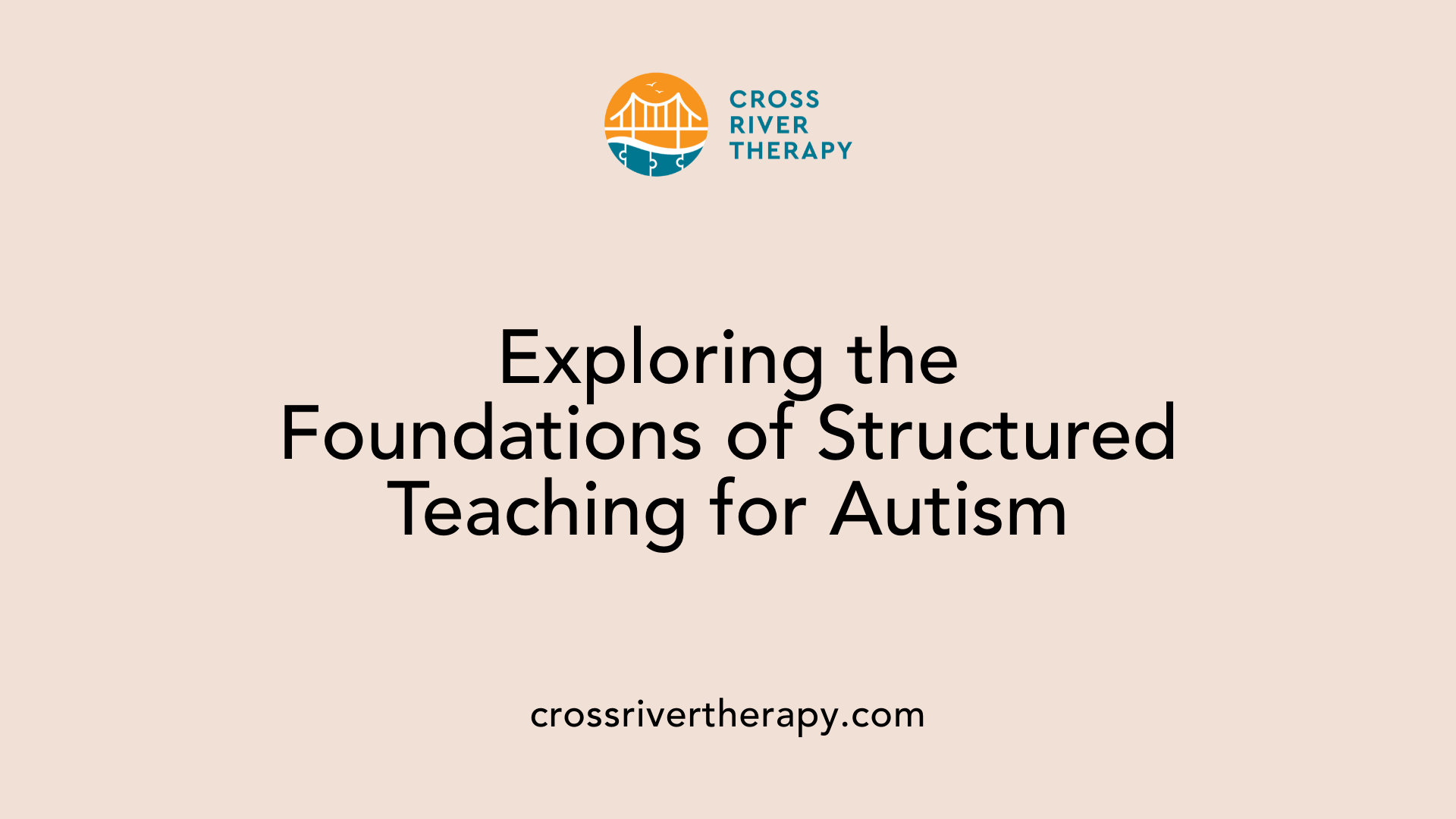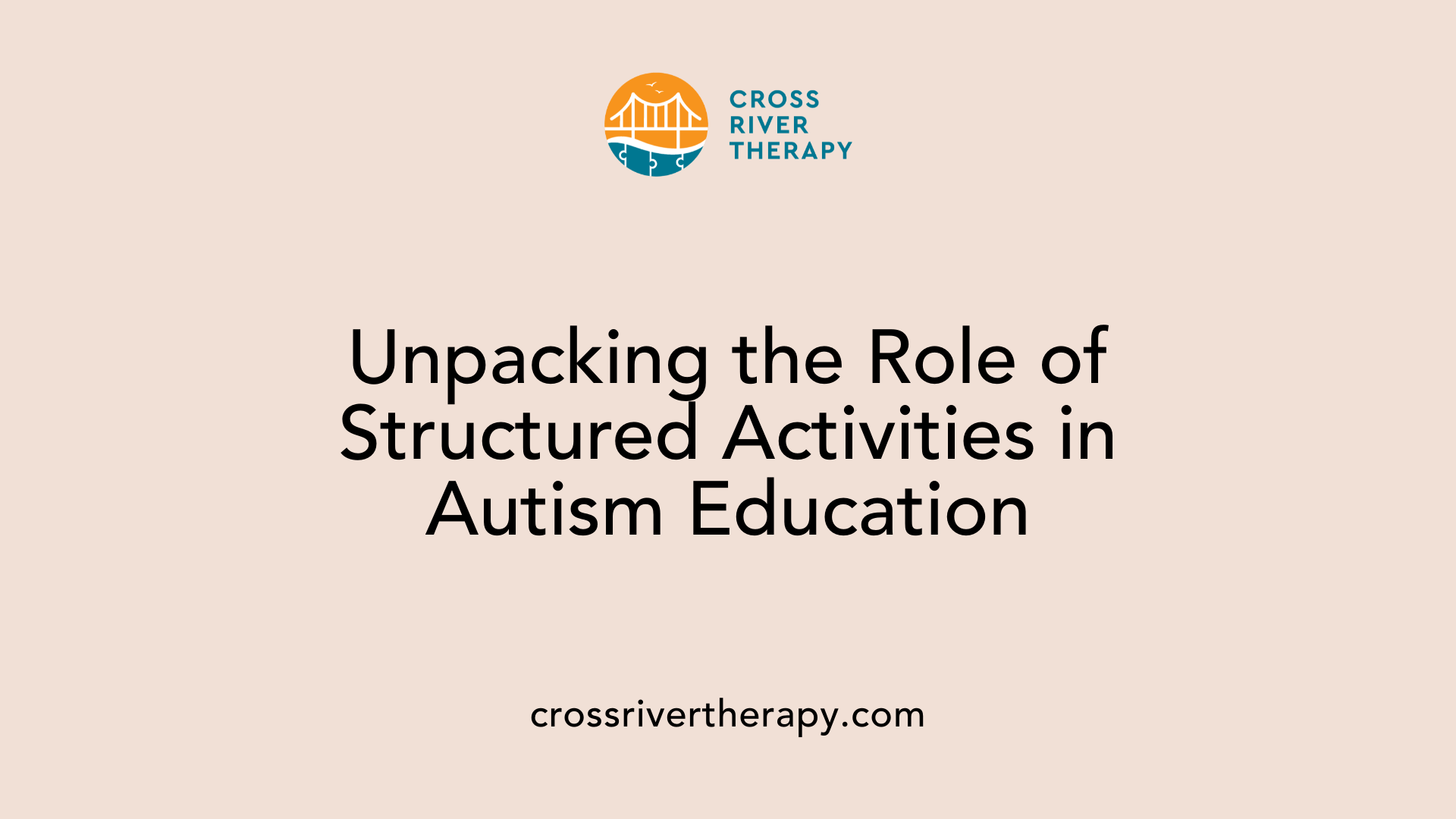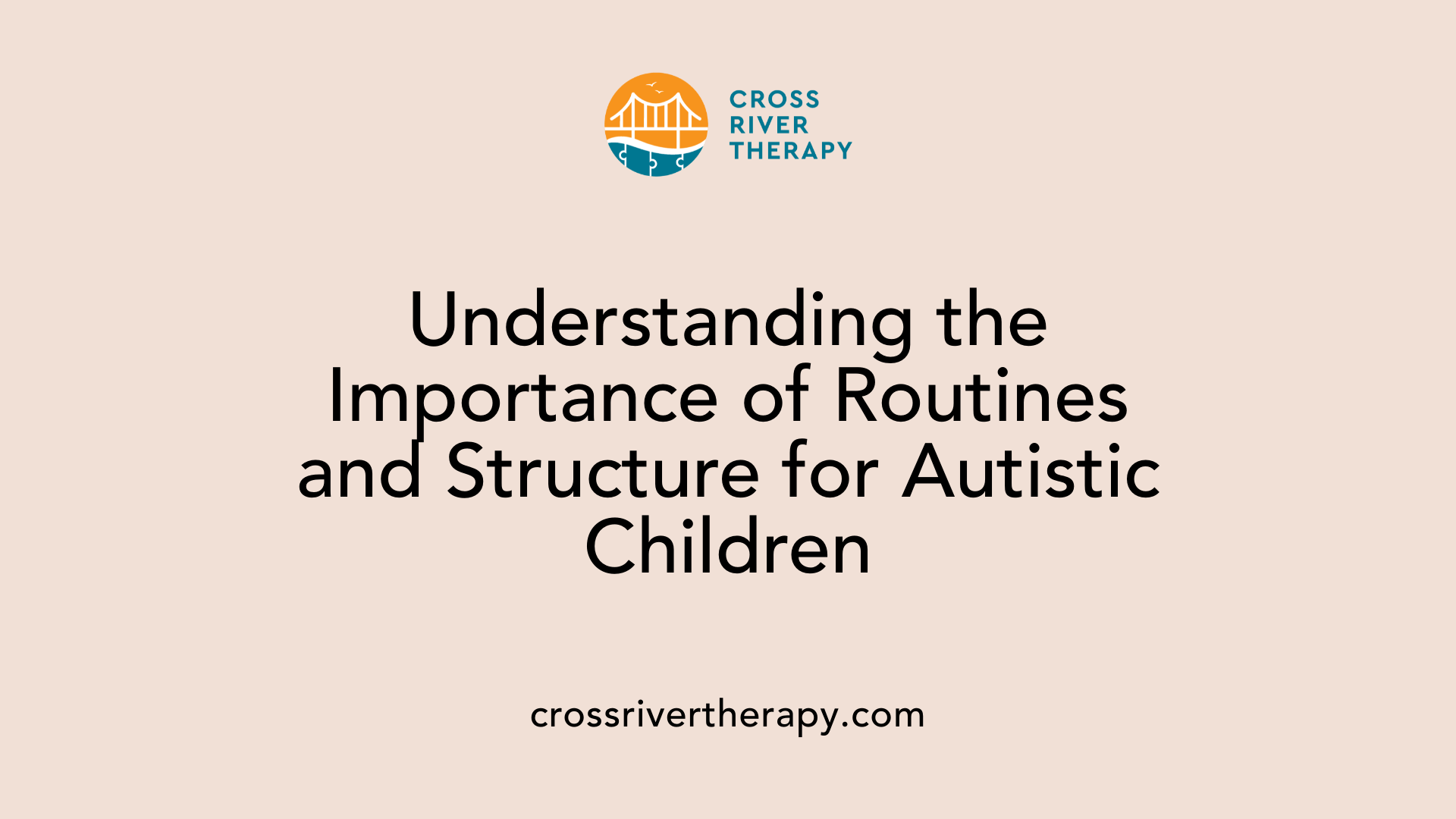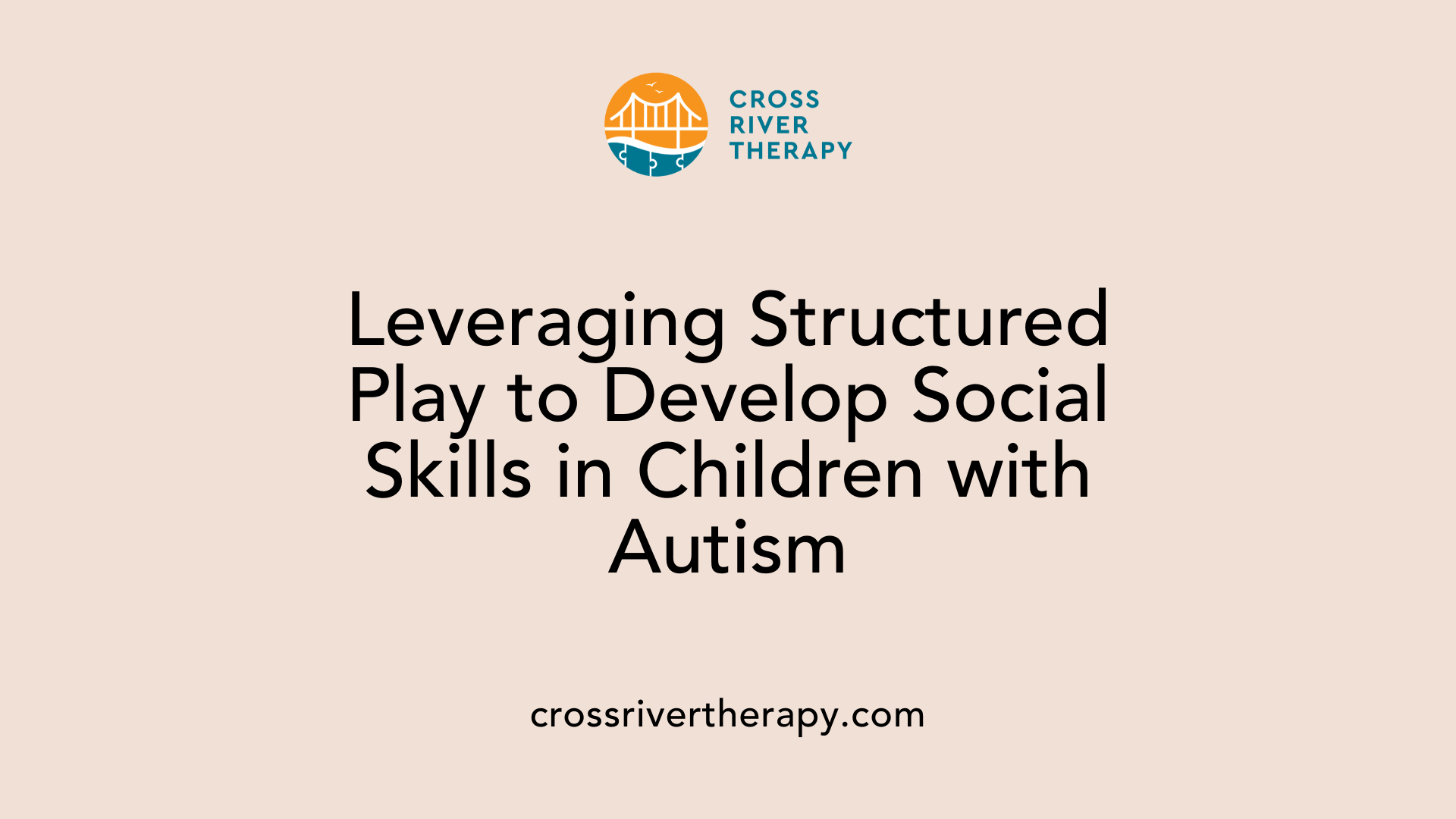Creating Structure in Autism Therapy
Harnessing Structure to Empower Autism Therapy
Understanding the Importance of Structure
Structure plays a pivotal role in autism therapy, directly addressing the unique needs of individuals with Autism Spectrum Disorder (ASD). By implementing organized environments characterized by routines, visual supports, and predictable schedules, therapists and caregivers can significantly enhance therapeutic outcomes. This article delves into the benefits, strategies, and applications of creating structured environments in autism therapy, examining how they reduce anxiety, enhance communication, and foster independence.
Foundations of Structured Teaching

What is structured teaching for autism?
Structured teaching for autism, known as Structured TEACCHing, is an educational strategy designed for individuals with Autism Spectrum Disorder (ASD). It was developed in the 1960s by Dr. Eric Schopler and Dr. Robert Reichler at the University of North Carolina. This method harnesses the strengths that many autistic individuals have in visual processing, while also addressing their challenges in social communication and executive functioning.
The core of Structured TEACCHing lies in its use of external organizational supports. These include a variety of visual aids such as schedules, charts, and cues that help clarify expectations and processes for learners. Through structured schedules, individuals can anticipate what comes next in their day, providing predictability and reducing anxiety—key factors that contribute to emotional and behavioral stability.
The Educational Approach for ASD
In practice, TEACCH programs can be seamlessly integrated into various settings—be it schools, homes, or therapies—to create environments that bolster learning. The approach emphasizes personalized support tailored to the unique needs of each child, focusing on their abilities and challenges. Furthermore, it promotes independence by breaking tasks into manageable segments, thereby allowing autistic individuals to understand the task flow clearly.
Ultimately, the structure fosters improvements in cognitive abilities, motor skills, and emotional well-being, demonstrating substantial educational benefits that positively impact the overall development of those with autism. Adopting structured teaching methods is not only vital for academic success but also for enhancing the quality of life for individuals diagnosed with ASD.
The Role of Structured Activities

What are structured activities for autism?
Structured activities for autism encompass a range of play types designed to enhance skill development and social interaction. These activities include jigsaw puzzles, board games, and matching games. They are particularly effective because they provide clear goals and definitive endpoints, which help autistic children understand expectations and engage more readily.
Benefits of structured play
Structured play encourages vital skills such as sharing, turn-taking, and following instructions within a supportive, low-stress environment. By offering predictability, these activities reduce anxiety, allowing children to focus on the task. Visual supports, such as schedules and prompts, can further assist children in grasping the steps involved, ensuring they are manageable and clear.
Skill development
Incorporating structured activities facilitates not just individual skill development but also fosters social interactions among peers. This approach to play creates opportunities for children to collaborate, communicate, and learn from one another. Overall, structured activities play a critical role in boosting the emotional and developmental growth of children with autism, supporting their ability to navigate social settings and build essential life skills.
Understanding Routines and Structure

How do routines and structure differ?
Routines and structure are both essential in supporting the development of children, particularly those diagnosed with autism. While they are related, they serve distinct functions. Routines offer a framework of order, consistency, and familiarity. This predictability helps children understand what is expected of them and fosters a sense of security. For instance, having a set mealtime or bedtime can provide comfort and stability in daily life, reducing anxiety around transitions.
On the other hand, structure encompasses the overarching boundaries, rules, and frameworks that enhance safety and promote positive interactions. Structured environments set clear expectations, which empower children with autism to engage effectively with the world around them. For example, a classroom with visual schedules and organized materials enables students to focus better and comprehend instructions.
Developing life skills through structured activities
The combination of routines and structure not only aids emotional well-being but also cultivates necessary life skills. Engaging in structured activities like guided play enables children to learn sharing, communication, and teamwork. This structured play helps to break down tasks into manageable components, making activities less overwhelming.
Additionally, using strategies such as visual aids alongside structured routines allows children to anticipate activities and can significantly enhance their ability to navigate daily life independently.
Emotional impact of routines and structure
Establishing consistent routines and a well-defined structure has profound emotional implications for children with autism. Routines foster a sense of ownership and predictability which diminishes feelings of anxiety associated with uncertainty. Furthermore, children thrive in environments where they understand the rules and can anticipate the next steps in their daily activities, leading to improved emotional regulation.
As a result, the emotional health of children with autism improves significantly as they develop confidence, resilience, and the ability to manage transitions more effectively, creating a secure foundation for further growth.
Benefits of Structured Environments

How can structure benefit individuals with autism?
Structured environments significantly aid individuals with autism by establishing clarity and predictability in their day-to-day activities. These organized settings utilize tools like schedules, physical setups, and visual supports, which work collectively to minimize anxiety, particularly during transitions between tasks or activities.
Reducing Anxiety
Consistent routines create a predictable framework for children with autism, fostering a sense of security. This predictability is essential as it helps them anticipate what comes next, reducing anxiety and facilitating smoother transitions. Strategies, such as advance notice of changes, paired with visual cues, allow autistic children to mentally prepare for shifts in routine, lessening the stress associated with uncertainty.
Promoting Independence
Visual supports, such as pictorial schedules and task breakdowns, play a vital role in promoting independence. These tools not only enhance understanding of tasks but also empower children to navigate daily routines with greater self-assurance. Through engagement with structured activities and clear expectations, children develop organizational skills that pave paths for independent living.
Using Visual Supports
Visual supports are instrumental in enhancing comprehension and communication, making them essential for individuals with autism. Tools like visual schedules help reinforce routines and learning, providing tangible reminders that guide them through each step of their day. These aids foster an interactive process, which actively involves children in managing their schedules and responsibilities.
Leveraging Structured Play for Social Skills

How can structured play support autistic children in developing social skills?
Structured play is a powerful tool for helping autistic children develop crucial social skills in a low-pressure environment. By providing a predictable and guided framework, structured play lets children practice essential skills such as sharing, taking turns, and following instructions. This guidance significantly reduces anxiety, allowing children to engage successfully with their peers.
Role of adult guidance
The adult's role in structured play is pivotal. Adults can provide support by setting up play activities and clearly explaining the rules. Activities like puzzles, board games, and matching games are particularly effective because they have specific goals and outcomes. These types of play are manageable and understandable, which is critical for children who may struggle with social interactions in unstructured environments.
Strategies for structured play
To optimize structured play, several strategies can be implemented:
- Visual supports: Use visual cues to outline steps in the play activity and signal progression.
- Gradual complexity: Start with simple activities and gradually increase difficulty as children become more confident.
- Interest-based activities: Tailor structured play to align with the child's interests to enhance engagement.
- Peer interactions: Encourage structured play groups to foster interactions with typically developing peers, promoting reciprocal play.
Through these strategies, structured play not only fosters competence in social situations but also enhances overall communication skills, laying the groundwork for more complex social interactions.
Implementing Visual Supports in Therapy
Use of Visual Aids
Visual supports play a critical role in enhancing communication and independence for individuals with autism. Tools like visual schedules, picture cards, and behavior charts help clarify expectations and show the sequence of tasks. By providing a visual representation of daily activities, these aids allow autistic individuals to navigate their surroundings with greater ease.
Enhancing Comprehension
Using structured visual materials aids comprehension by breaking down instructions into manageable segments. This structure enables individuals to understand what is required of them, increases focus, and facilitates better learning outcomes. Clear visual cues help distinguish relevant information from distractions, leading to improved task management and completion.
Supporting Transitions
Supporting transitions with visual prompts, such as timers and advance notices, significantly reduces anxiety associated with changes in routine. By providing visual cues before shifting to a new activity, individuals with autism can anticipate changes and prepare mentally. This structured approach not only eases transitions but also fosters a sense of control, enhancing emotional well-being.
Strategies for Establishing Predictable Routines
Creating Daily Routines
Establishing structured daily routines is essential for individuals with autism. By creating predictable schedules, children can familiarize themselves with their surroundings, which helps reduce anxiety. A well-planned routine may include specific times for meals, play, and learning activities. Visual schedules that outline each part of the day can enhance comprehension and provide reassurance about upcoming events.
Consistency and Reinforcement
Consistency is key when implementing routines. If a task is scheduled for a specific time, maintaining that time every day reinforces stability and predictability. Positive reinforcement during these routines encourages children to engage in activities with less resistance. For instance, celebrating small achievements during a daily routine can boost their confidence and motivation.
Effective Routines
Design effective routines that incorporate visual supports, like charts and timers, to assist with transitions between activities. Providing warnings before changes can ease anxiety related to routine shifts. Structured play activities can facilitate social interaction and learning, making daily routines not just predictable but also engaging. Remember, adapting routines to fit individual preferences will further enhance their effectiveness.
Integrating Structure for Better Outcomes
Establishing structured environments in autism therapy is vital for facilitating positive therapeutic outcomes. By understanding and implementing routines, visual supports, and structured activities, therapists, caregivers, and educators can significantly improve the lives of individuals with autism. This structured approach fosters an environment of predictability and security, crucial for enhancing emotional well-being, communication, and social skills. As the field of autism therapy continues to evolve, the role of structure remains a foundational component in helping individuals achieve greater independence, confidence, and overall quality of life.
References
- What is a structured environment? Why is it helpful for autistic ...
- The Role of Routine and Structure in Autism | Discovery ABA
- Understanding the Need for Structure in Autism
- The Importance of Structure for Kids with Autism - Cross River Therapy
- The Power of Structure for Autism Support - Ambitions ABA Therapy
- Treatment and Intervention for Autism Spectrum Disorder - CDC



